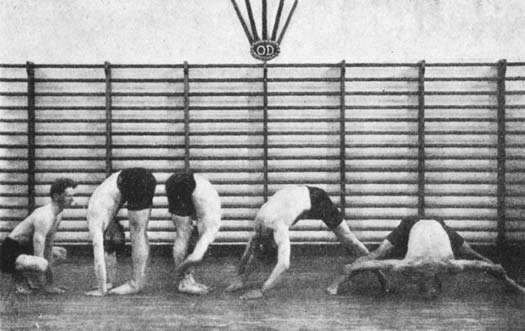In the Pines
I had a(nother) breakthrough this week thinking about what it means to practice playing my fiddle. Let me see if I can describe it for you. You see, I suddenly figured out how to get inside the music.
Does that make any sense? There I was, trying to get the last turn of phrase in Old Joe Clark down, playing it over and over again, and still tripping up the same place every time, and it occurred to me that I needed to break it down even further. Not C#-B-A-G-A-A, but just the transition from A-G, that is what I needed to practice. I could do it fairly cleanly if I was doing a downstroke on the A, followed by an upstroke on the G, but if I hit the A on the upstroke, I invariably fumbled the G on the downstroke. I'm just doing saw strokes in this piece, which means I am not able to keep the same bowing pattern from repetition to repetition (unlike for In the Pines, in which we learned a bowing pattern that maintains the same strokes from repetition to repetition), so I needed to be able to play the phrase smoothly from whichever direction I came at it. Think jump rope and trying to enter in the "front door" with the rope moving towards you from the top as opposed to "back door" with it coming at you from the bottom. One way is always easier, so you need to learn to be comfortable with the other way, too. Or think fencing a left-handed fencer if you've only practiced with right-handed fencers. Or taking the man's part in a dance if you've been learning the woman's part (like in square dancing). Somehow, I needed to get inside of the movement, really pay attention to why I was tripping up when the strokes went one way rather than another.
Which is when it hit me. When I would practice piano as a child, I always thought the point was to play the piece from beginning to end without making any mistakes. Which was, you guessed it, pretty much impossible when you first started learning a piece (and, therefore, ever). So I would start, play until I made a mistake, then stop [insert appropriate expressions of frustration]...and start at the beginning again. I have no idea why, but it never occurred to me simply to stop and practice the part that had tripped me up. I had the sense that the important thing was to play the piece through, that it existed only on a continuum, and that if I messed up at any point, I had somehow broken it and had to start again. Not only was this probably the single most frustrating way to learn to play a difficult instrument, it was also (I now realize) completely wrong, like learning to write without ever learning to spell. It meant that I thought of what I played only in terms of how many notes there were and how fast I could play them without having to stop. I never had any sense of how the music worked, as it were, from inside, why this note followed on that one, why it was hard to make my fingers hit these keys in that order. It also meant that I never quite learned how to play the tricky bits, especially the turns, because I never paused long enough to isolate them and play just those bits over and over again until they seemed easy.
Until yesterday, when I suddenly became conscious of what it meant to try to play these notes with this instrument, and, therefore, of what I needed to pay attention to. The point was not to play the full turn, it was to take it apart even further, down to the smallest movement, and then build it back up again, little by little, paying attention to exactly how my bow was moving when I tripped up, and then practicing that bit until it felt natural. I needed to feel it out, really attend to each note individually, not just as a sequence that I had someone learned as a muscle memory, but be able to stop and understand the pattern, just like learning to spell. I might know how the whole song was supposed to sound from listening to it on a recording, but until I had a feel for each individual note, I wouldn't really know the piece, even if I could play it from beginning to end without making a mistake. I needed, if you will, to pay attention to the trees, not just the wood.
Does this make any sense at all?
Does that make any sense? There I was, trying to get the last turn of phrase in Old Joe Clark down, playing it over and over again, and still tripping up the same place every time, and it occurred to me that I needed to break it down even further. Not C#-B-A-G-A-A, but just the transition from A-G, that is what I needed to practice. I could do it fairly cleanly if I was doing a downstroke on the A, followed by an upstroke on the G, but if I hit the A on the upstroke, I invariably fumbled the G on the downstroke. I'm just doing saw strokes in this piece, which means I am not able to keep the same bowing pattern from repetition to repetition (unlike for In the Pines, in which we learned a bowing pattern that maintains the same strokes from repetition to repetition), so I needed to be able to play the phrase smoothly from whichever direction I came at it. Think jump rope and trying to enter in the "front door" with the rope moving towards you from the top as opposed to "back door" with it coming at you from the bottom. One way is always easier, so you need to learn to be comfortable with the other way, too. Or think fencing a left-handed fencer if you've only practiced with right-handed fencers. Or taking the man's part in a dance if you've been learning the woman's part (like in square dancing). Somehow, I needed to get inside of the movement, really pay attention to why I was tripping up when the strokes went one way rather than another.
Which is when it hit me. When I would practice piano as a child, I always thought the point was to play the piece from beginning to end without making any mistakes. Which was, you guessed it, pretty much impossible when you first started learning a piece (and, therefore, ever). So I would start, play until I made a mistake, then stop [insert appropriate expressions of frustration]...and start at the beginning again. I have no idea why, but it never occurred to me simply to stop and practice the part that had tripped me up. I had the sense that the important thing was to play the piece through, that it existed only on a continuum, and that if I messed up at any point, I had somehow broken it and had to start again. Not only was this probably the single most frustrating way to learn to play a difficult instrument, it was also (I now realize) completely wrong, like learning to write without ever learning to spell. It meant that I thought of what I played only in terms of how many notes there were and how fast I could play them without having to stop. I never had any sense of how the music worked, as it were, from inside, why this note followed on that one, why it was hard to make my fingers hit these keys in that order. It also meant that I never quite learned how to play the tricky bits, especially the turns, because I never paused long enough to isolate them and play just those bits over and over again until they seemed easy.
Until yesterday, when I suddenly became conscious of what it meant to try to play these notes with this instrument, and, therefore, of what I needed to pay attention to. The point was not to play the full turn, it was to take it apart even further, down to the smallest movement, and then build it back up again, little by little, paying attention to exactly how my bow was moving when I tripped up, and then practicing that bit until it felt natural. I needed to feel it out, really attend to each note individually, not just as a sequence that I had someone learned as a muscle memory, but be able to stop and understand the pattern, just like learning to spell. I might know how the whole song was supposed to sound from listening to it on a recording, but until I had a feel for each individual note, I wouldn't really know the piece, even if I could play it from beginning to end without making a mistake. I needed, if you will, to pay attention to the trees, not just the wood.
Does this make any sense at all?





Comments
Post a Comment
Thank you for taking the time to respond to my blog post. I look forward to hearing what you think!
F.B.